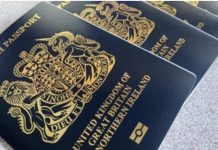Brexit marks a giant shift away from the status quo for British citizens in 2021. Of course, what many people want to know first and foremostly is whether we can still go on holiday to Europe?
The answer, fortunately, is yes. Yet there will be a few changes next time you arrive at an EU airport as a tourist from Britain.
One big new change that UK tourists will have to be ready for is the new ETIAS for UK citizens. This article explains what you’ll need to know when this launches in 2022 and looks at some of the other guidelines you’ll need to follow as a British tourist post-Brexit.
What is ETIAS?
ETIAS stands for European Travel Information Authorization System. It is a brand new border control operation that will protect the frontiers of the Schengen Area that comprises 26 European countries such as France, Germany and Spain.
It is set to launch in 2022 and, when it does, tourists from non-EU third countries with a visa waiver agreement (which now includes the UK) will need to apply for travel authorisation to enter the region.
Who needs an ETIAS visa waiver?
If you have a British passport you will need to apply for an ETIAS visa waiver from 2022 to visit the EU. At the moment UK citizens can travel to a European Schengen country with just a valid passport but this will change at the beginning of next year.
How can I get an ETIAS visa waiver?
When ETIAS launches in 2022, preparing to travel to the EU will be a bit like the process of visiting the USA with an ESTA visa waiver. As in the case of the US, you will need to register online for travel authorisation before you depart.
You’ll only need to spend a few minutes filling in the online form and once you’ve registered everything correctly, you should be approved in under 48 hours. Also once you’ve registered your visa waiver, it will last for 3 years or until your current passport expires.
What countries can I visit with ETIAS?
When you register for an ETIAS visa waiver you will need to specify your country of arrival. However, once you are in Europe you can travel to any of the other Schengen member states without needing any further passport or document checks.
There are 26 countries in the Schengen agreement. As long as you don’t exceed a total of 90 days in the area you can travel wherever you want in the passport-free zone with the ETIAS.
Preparing for post-Brexit tourism
ETIAS is a major change in how British tourists will travel after Brexit but it doesn’t arrive until 2022. However, today in 2021 there are already a few changes that you’ll have to be prepared for if you decide to visit Europe in the coming months.
Check your passport
Now that Britain is no longer in the EU, passports with under 6 months left before expiry will not automatically be accepted when you visit the continent. You must make sure that your passport is no older than 10 years old too. This is because some UK passports last for 10 years and 6 months).
If your passport has less than 6 months left or your document was issued more than 10 years before your arrival date you should consider renewing. This doesn’t apply to Ireland however.
Join the right queue
One of the big changes for British tourists is that you won’t be able to enter countries via the EU passport lines at the airport anymore. It’s now necessary to queue up in the Rest of The World line instead. You also won’t be able to use the e-gates when entering European countries anymore.
Prepare your pets
Travelling to the EU with pets is going to be quite different after Brexit than it was before. This is because it’s no longer possible to use a European pet passport issued in Great Britain.
Instead, you will need to get an Animal Health Certificate (AHC) from a vet. These must be acquired no less than 10 days before you travel and you will need a new one for each trip you make to the EU. Your pet must also be microchipped and vaccinated against rabies.
Get the right health coverage
Now that Britain is out of the EU it’s no longer possible to register for new European Health Insurance Cards (EHIC). However, if you already have one, you can continue to use it until its expiry date.
Instead, British tourists can apply for the UK government’s new Global Health Insurance Card (GHIC), which provides reduced or free healthcare coverage in EU countries. Alternatively, you can also buy a European travel insurance policy that covers healthcare.
Don’t overstay beyond 90 days
As a UK citizen, you can visit the EU visa-free for 90 days in any 180-day period for reasons such as tourism or attending a business meeting. However, any longer than that and you will need a Schengen visa from the country you will be residing in.
There are a few key differences in how British tourists must prepare themselves for a visit to the EU. Yet fundamentally, visiting Europe for a holiday is still a relatively fast and straightforward process.







